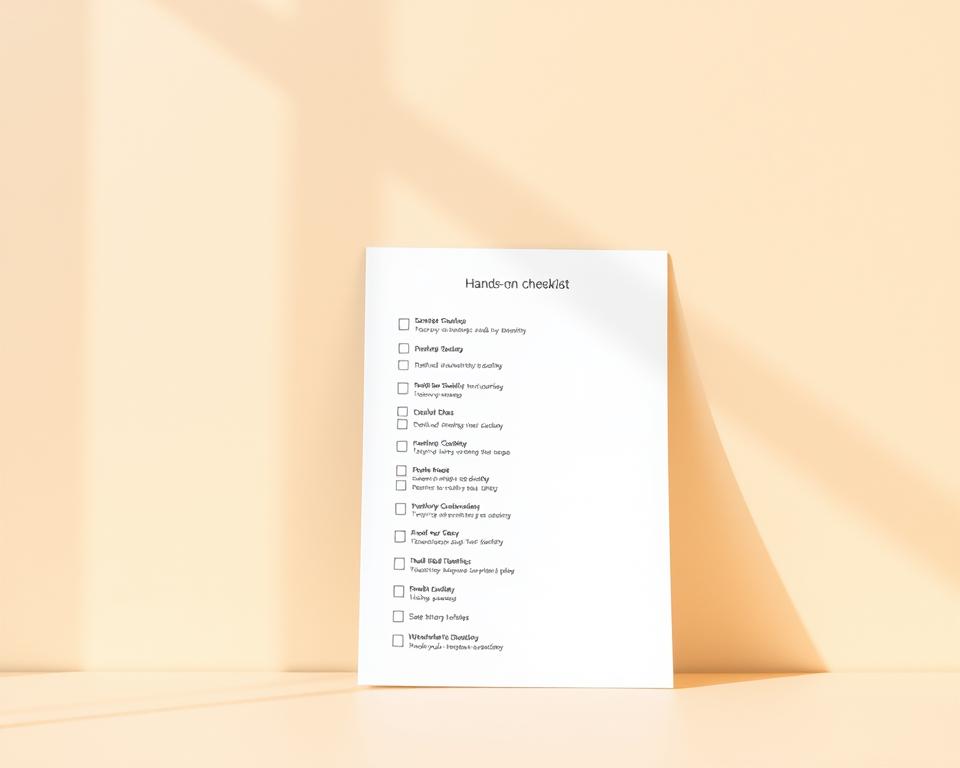Anúncios
Can a few simple moves in the first minutes after you wake change how your day plays out? You’re here for easy ideas, not a strict script. Try small choices that help you start day with more calm and clarity.
Many people find the start of day is tougher when sleep is short. Short, repeatable steps — like skipping snooze, sipping water, or a five‑minute stretch — can make your routine feel doable.
Think of your morning as limited time and attention. Pick one thing to do well. Use a brief no‑phone window or gentle alarm if that fits your schedule.
This piece shares practical trends and options so you can shape a routine that matches work, family, or commuting. Explore what fits, check reliable sources if needed, and notice how your mind feel after a few tries.
Reset your sleep and wake-up anchors
Small night cues can steer your sleep and make getting up less of a battle. Protecting time in bed and a consistent wake anchor helps your whole day feel steadier the next day. Use simple, repeatable moves so the change sticks.
Protect a full night’s sleep with simple wind-down cues
Set a lights‑out window you can keep most nights. Try a short wind‑down stack: dim lights, close the laptop, read for 10 minutes, and lay out tomorrow’s outfit. Use device “Bedtime” or “Wind Down” modes to limit late notifications.
Ditch the snooze to avoid rushed, groggy starts
Place your alarm away from the bed so you have to stand to turn it off. Count to five when it rings and step out of bed. Keep slippers by the side to reduce friction and avoid losing 20–30 minutes to snooze cycles.
Try gentle wake-ups: softer alarms, light, or preset coffee
Swap harsh tones for nature sounds or soft instrumentals and let light in by cracking curtains. If you like coffee, preset the machine so aroma nudges you. Experiment until you notice a real difference in your state when you wake.
Hydration and breakfast that actually fit your morning
A quick drink and a simple bite can set a steady tone for the rest of your day. Start with one small setup that removes a decision: a glass by the sink or a bottle at your bedside.
Drink a glass of water before coffee to rehydrate fast
Put a glass where you’ll see it at wake-up. Aim to drink a full glass water before your brew so you check hydration off early.
Keep coffee or tea enjoyable, not stressful
Preset the coffee machine or kettle for aroma and warmth without fuss. If caffeine bugs you, try half-caf, decaf, or herbal tea and choose what your body prefers today.
Build quick breakfasts with fat, fiber, and protein
Think eggs and avocado, Greek yogurt with fruit and granola, or peanut butter on whole‑grain toast. A blended smoothie with frozen fruit, spinach, yogurt, and nut butter works fast.
- Prep freezer smoothie packs or overnight oats to save minutes.
- Batch-cook hard‑boiled eggs and portion nuts for grab-and-go fuel.
- If appetite is low, sip water now and plan a light bite within the first couple of hours.
Try one small change this week and notice how it affects your energy and focus through the day.
Move your body and calm your mind
A short burst of movement and a few calm breaths can shift how you feel for the rest of the day. Keep the plan small so you actually do it: 5–15 minutes is enough to nudge your energy and set a steady tone.

Sneak in a 5–15 minute workout
Pick one micro-move: a 5-minute walk, 10 sun salutations, or a short bike spin. Jog the neighborhood, ride a stationary bike, or do a quick yoga flow to wake the body without overhauling your schedule.
Stretch and step outside
If you sit a lot, add 60 seconds of targeted stretches for hips, hamstrings, shoulders, and neck. When possible, step outside for two minutes of fresh air and light to lift your mood and focus.
Use short affirmations
Try a one-line affirmation out loud while you breathe. Examples: “I can handle what’s on my plate today.” or “I am grateful for this work.” Keep it simple and believable.
Add mindful minutes
Two mindful minutes can help steady the mind. Inhale for four, exhale for six, or write three quick lines in a journal to clear your head. Use a timer or notes app to keep the practice friction-free.
“Consistency beats length — a brief routine done often builds real energy.”
- Keep shoes by the door or a mat unrolled so movement is easy.
- Combine motion with a playlist or podcast to make the way into the day feel easier.
- Rotate options across the week and note what gives you steady energy so you can repeat it.
Set healthy phone and media boundaries
Start your day by testing a simple no-phone window and watch how it changes your early minutes. Treat this as an experiment: pick 30–60 minutes and notice the difference in stress, focus, and tone for the rest of the day.
Keep a 30–60 minute no-phone buffer after waking
Charge your phone outside the bedroom or place it across the room so you must stand to turn off the alarm. Use a basic alarm clock if that fits your routine.
Set a Focus or Do Not Disturb schedule the night before so notifications stay quiet while you build this window.
Swap scrolling for intentional audio
Replace reflex scrolling with music or a short podcast you love. Pick something uplifting or calming and limit it to a few minutes to set the right mood.
- Open only the workout or timer app if you need the phone for exercise.
- Use calmer alarm tones or let sunlight in to avoid abrupt wake-ups.
- Keep a visible sticky note reminding you of this first thing commitment.
“Even ten minutes of phone-free time can change how your morning feels.”
healthy morning habits for planning your day
Spending three minutes on a simple plan makes the rest of your day clearer. A short list helps you pick the right first moves and keeps choices from piling up.
Make a short to-do list that prioritizes three key tasks
Write a tiny to-do list with three must-do tasks. Keep each task specific so starting feels easy—example: “email Alex for files” instead of “work on project.”
Label tasks by type (calls, writing, errands) and batch similar work to cut switching costs. Park big items for the afternoon and protect one morning task for deep focus.
Make your bed and prep small things to signal “ready for the day”
Make bed right after you stand up. A tidy bed reduces visual clutter and gives a quick sense of order that can help set your pace.
- Prep small things: fill your water bottle, set out breakfast components, and lay out clothes to smooth your routine.
- Keep your planning tool simple: a paper card, notes app, or a calendar block you will actually check.
- Add one buffer block for surprises so the list stays realistic, and pick tomorrow’s top one before you log off.
“A short list and small cues make it easier to start the day and keep momentum.”
Conclusion
A few tiny experiments each week help you find a routine that fits your life. , Try delaying phone use, drinking water before coffee, a simple breakfast, and five mindful minutes to see how your mind reacts.
Pick one or two things at a time. Make the bed, set a gentle alarm, or write a three-item list to guide your start day. Track what feels better over a week and keep the moves that stick.
Remember: there’s no single best morning routine for everyone. For deeper guidance on sleep, nutrition, or planning, consult reputable sources or a qualified professional. Small, steady changes often change your mood and focus throughout day.



